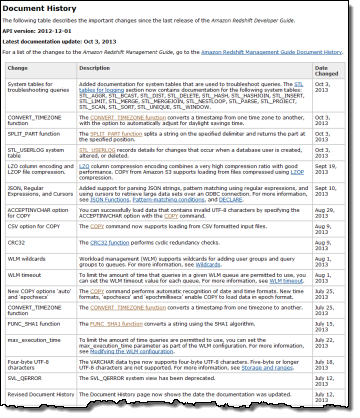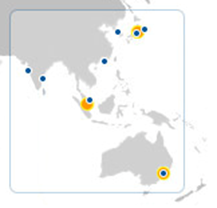AWS News Blog
Amazon Redshift Expands into Asia Pacific, Adds Features
Amazon Redshift lets you deploy a fast, fully managed, petabyte-scale data warehouse with just a couple of clicks. Once you create your cluster, you can use it to analyze your data using your existing business intelligence tools. Custom applications that use JDBC or ODBC connections will also work, as will those which use standard PostgreSQL drivers. Net-net, the analytical tools that you use today should work with Amazon Redshift.
Today we are making Amazon Redshift available in two more AWS Regions, and we are formally announcing a big pile of features that we have quietly added over the past few months. I’ll also toss in an interview with Redshift Product Manager Rahul Pathak.
Redshift in Asia
You can now launch Amazon Redshift clusters in the Asia Pacific (Singapore) and Asia Pacific (Sydney) Regions.
Amazon Redshift is also available in the US East (Northern Virginia), US West (Oregon), EU (Ireland), and Asia Pacific (Tokyo) Regions.
The XL Node (2 TB of compressed customer storage, 15 GiB of RAM) and 8XL Node (16 TB of compressed customer storage, 120 GiB of RAM) are available in all of the regions listed above, with both On-Demand and Reserved Instance pricing (see the Redshift Pricing page to learn more).
New Features
The Redshift team has been adding features at a rapid pace, many of them in response to your feedback on the Redshift forum. You can use this forum to provide us with input, ask questions, and keep track of newly released features.
Here’s what we are adding in this week’s release:
- The CONVERT_TIMEZONE SQL function converts a timestamp from one time zone to another, and can now automatically adjust for Daylight Savings Time.
- The new SPLIT_PART SQL function splits a string using a specified delimiter and returns the part at a specified position.
- The new STL_USERLOG table records the changes that occur when a database user is added, changed, or deleted.
And here’s what we added before that (see the documentation history for more information):
 LZO column encoding.
LZO column encoding.- LZOP file compression.
- JSON string parsing.
- Regular expressions in conditional expressions.
- Cursors for ODBC connections.
- Replacement of invalid UTF-8 characters.
- Support for 4-byte UTF-8 characters.
- IAM resource-level permissions.
- Restore progress metrics.
- COPY from CSV format.
- Workload Management (WLM) enhancements.
- Automatic date, time, and format recognition for COPY.
- New FUNC_SHA1, MD5, and CRC32 functions.
- Snapshot sharing between AWS accounts.
Here’s Rahul
I interviewed Rahul Pathak, Amazon Redshift Product Manager, last month for the AWS Report:
— Jeff;
PS – If you are new to Amazon Redshift or you are not sure what a data warehouse is and why you need one, take a look at our Introduction to Amazon Redshift video.

